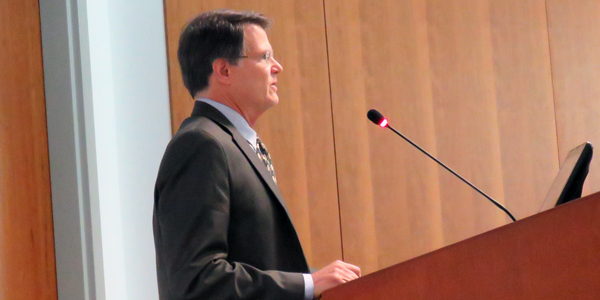By Jason Fordney
CAISO last week unveiled a plan to restructure its congestion revenue rights auction to address long-running complaints that the process has saddled California electricity ratepayers with more than $500 million in excess costs over the past five years.
The debate over CRRs has pitted the ISO’s Department of Market Monitoring against the interests of financial traders, which the department says are the biggest beneficiaries of the current CRR market design.
The department has previously called on CAISO to disband the auctions and replace them with a bilateral market for forward contracts-for-differences, and it is becoming increasingly public about its opposition. (See CAISO Monitor Proposes to End Revenue Rights Auction.)
“We have stopped beating around the bush when we speak publicly about the auction,” DMM Group Manager Ryan Kurlinski said at a Feb. 2 meeting of the CAISO Market Surveillance Committee, at which the ISO introduced its proposal. He added that the problems are also present in other RTOs. (See Role, Value of Financial Trading Debated by OPSI Panel.)
CAISO last May said it needed to undertake a detailed study of the CRR process before dealing with the issue. (See CAISO: Analysis Needed Before Reforms on CRR Auctions.)
The department, headed by Eric Hildebrandt, is adamant that the CRR auctions are bad for consumers, and on Friday provided the MSC with eight sets of comments, white papers and presentations it has published on the matter. A presentation by the Monitor described “the myth” and “stories” advanced by proponents of the current auction structure.
Proposal Restricts CRR Auctions
While CAISO is still refining the details of a draft proposal it plans to issue this week, its own presentation to the MSC laid out a two-track approach to tackling CRR auction reforms. The first track would consist of “stopgap” measures to be developed in time to be submitted to the Board of Governors for approval in March. The second would be a more extensive set of changes submitted to the board in the middle of the year.
The ISO is proposing to restrict the allowable sources and sinks of CRR transactions to only those pairs that are needed to hedge the physical delivery of energy. Currently, there is no such limitation and market participants can purchase any pair of CRRs, such as between generators or load aggregation points, CAISO noted in its presentation.
The proposal would limit source and sink pairs of CRR transactions to nodes between generators and interties, as well as between trading hubs, loads and interties. The purpose: to align the auction with hedging of physical energy delivery and increase the competitiveness of the auction.
CAISO has also proposed to decrease the amount of system capacity released in the CRR auction process from 60% to 40% in the long-term allocation, and 75% to 45% for the annual allocation and auction process — a move intended to reduce overselling of transmission capacity. The ISO would also eliminate disclosure of certain modeling information and align existing outage reporting rules with the annual CRR process.
Traders Question CRR Changes
Speaking for the Western Power Trading Forum, Ellen Wolfe of Resero Consulting said the ISO had not properly explained how the proposal would address its stated problems. For example, the DMM had identified low participation as one of its concerns about the auction, but the proposal to restrict auction parameters would possibly exacerbate that, she said.
“You are taking precision out of the auction, supposedly for some benefit,” Wolfe said, adding that the MSC should help determine whether the proposal would actually solve the problems. “In a way, you are kind of dumbing down the functionality to prevent something that is not perfectly articulated yet,” she said.
MSC member Scott Harvey, of FTI Consulting, replied that “we are interested in facilitating hedging. We are not trying to force people to buy risky financial instruments at a discount and price them that way.
“We need to understand what type of hedging activity would be infeasible in this approach” and then address any issues in the proposal, he said.
CAISO said it will issue the draft proposal on Feb. 7 and has scheduled a Feb. 13 meeting for market participants to weigh in.





